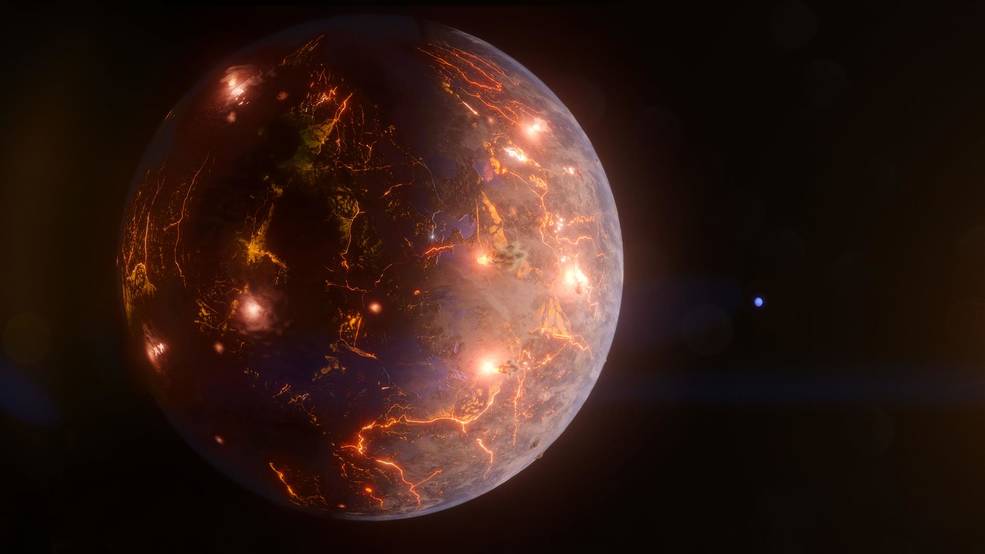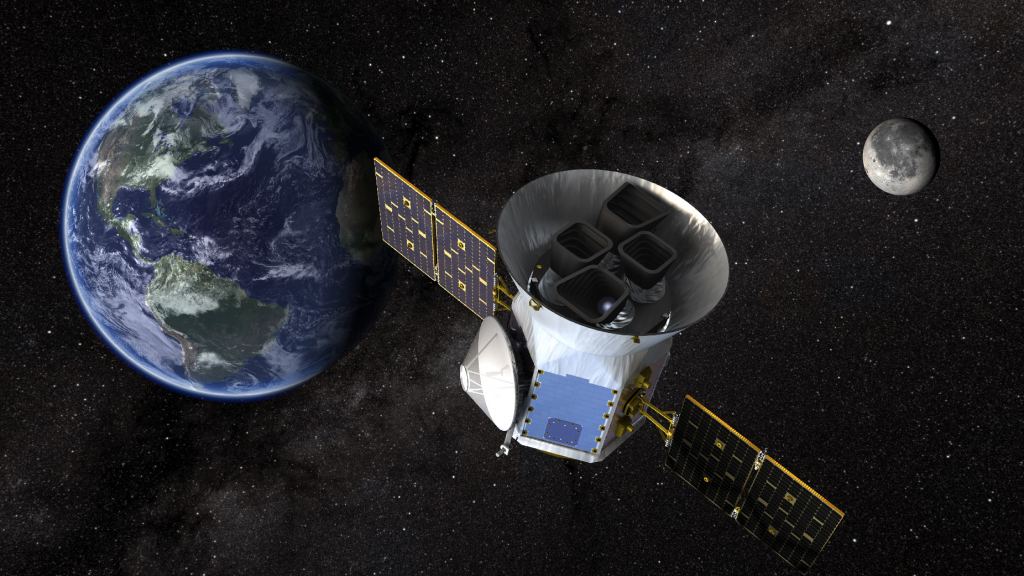LP 791-18 d, shown here in an artist’s concept, is an Earth-size world about 90 light-years away. The gravitational tug from a more massive planet in the system, shown as a blue disk in the background, may result in internal heating and volcanic eruptions – as much as Jupiter’s moon Io, the most geologically active body in the solar system. Credits: NASA’s Goddard Space Flight Center/Chris Smith (KRBwyle)POSTED ONMAY 18, 2023 BY NANCY ATKINSONAstronomers Find an Earth-Sized World That May Be Carpeted in Volcanoes

Astronomers think they’ve found an extrasolar planet covered in volcanoes like Jupiter’s moon Io, but this world is about the same size as Earth. Designated LP 791-18 d, the planet is probably tidally locked around a small, red dwarf star about 90 light-years away in the constellation Crater. There are two other more massive planets in the system, and their tidal interactions could cause enough tidal flexing that it unleashes planet-wide volcanoes on LP 791-18 d.
Planet d is located within the habitable zone of the star, and with all the other conditions, astronomers think it might be temperate enough on the permanent night side of this world to allow water to exist.
“LP 791-18 d is tidally locked, which means the same side constantly faces its star,” said Björn Benneke, a astronomy professor at the Trottier Institute for Research on Exoplanets (iREx) based at the University of Montreal, in a NASA press release. He is also co-author of a new paper describing the planet. “The day side would probably be too hot for liquid water to exist on the surface. But the amount of volcanic activity we suspect occurs all over the planet could sustain an atmosphere, which may allow water to condense on the night side.”

Artist illustration of NASA’s Transiting Exoplanet Survey Satellite (TESS) observing the heavens. (Credit: NASA’s Goddard Space Flight Center)
Io is the most volcanically active body in our Solar System, and astronomers think this newly found planet could be just as active, if not more. LP 791-18 d was found by using data from the TESS (Transiting Exoplanet Survey Satellite) and data from the now-retired Spitzer Space Telescope. Follow-up observations were also done with several ground-based observatories.
The two other worlds in the system were discovered in 2019, also with TESS. They are called LP 791-18 b and c, and the inner planet b is about 20% bigger than Earth. The outer planet c is about 2.5 times Earth’s size and more than seven times its mass and it too may also have an atmosphere. These two planets are ideal targets for the James Webb Space Telescope (JWST), so we’ll learn more about how the three planets interact with future observations.
Benneke and Merrin Peterson, a graduate iREx and several other researchers published a paper on the newly found planet in the journal Nature.
The team explained that during each orbit, planets d and c pass very close to each other. Each close pass by the more massive planet c produces a gravitational tug on planet d, making its orbit somewhat elliptical. On this elliptical path, planet d is slightly deformed every time it goes around the star. These deformations can create enough internal friction to substantially heat the planet’s interior and produce volcanic activity at its surface. This is similar to how Jupiter and some of the other moons affect Io.
If the planet is as geologically active as the research team suspects, it could maintain an atmosphere. With an atmosphere, the temperatures on the planet’s permanent night side could allow water to condense on the surface.
“A big question in astrobiology, the field that broadly studies the origins of life on Earth and beyond, is if tectonic or volcanic activity is necessary for life,” said co-author Jessie Christiansen, a research scientist at NASA’s Exoplanet Science Institute at the California Institute of Technology in Pasadena. “In addition to potentially providing an atmosphere, these processes could churn up materials that would otherwise sink down and get trapped in the crust, including those we think are important for life, like carbon.”
In an interesting side note, Spitzer’s observations of this system were among the last the satellite collected before it was decommissioned in January 2020.





